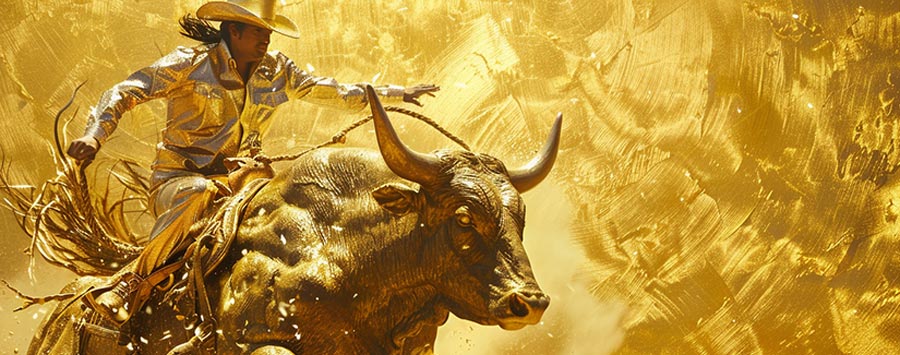
Yes – for the first time ever, a 400-ounce bar of gold is now worth $1 million. No wonder so many central banks and investors are piling up the yellow metal.
 Bullion.Directory precious metals analysis 20 August, 2024
Bullion.Directory precious metals analysis 20 August, 2024
By Mike Maharrey
Journalist, analyst and author at Money Metals Exchange
We hit the $1 million gold bar milestone on Friday when the price of gold topped $2,500 for the first time.
The price of gold is up about 22 percent on the year and has set several new records along the way.
Of course, you don’t have to have $1 million to buy a gold bar. A 400-ounce bar is quite heavy and isn’t the standard except in some markets such as Europe. In the U.S. kilo bars and 100-ounce bars are more common. But even a 100-ounce bar is nothing to sneeze at, costing a quarter-million dollars with gold at $2,500 an ounce.
Consumers can buy gold in much smaller sizes, including 1-ounce, 5-ounce, and 10-ounce bars.
It’s not so much that gold is getting more expensive. The dollar is getting weaker. The greenback hit a 7-month low on Monday as markets anticipate the Federal Reserve’s pivot to easier monetary policy. In effect, this means more inflation.
In fact, the central bank already loosened monetary policy when it quietly announced that it would begin to taper balance sheet reduction in June.
The balance sheet serves as a direct pipeline to the money supply. When the Fed buys assets – primarily U.S. Treasuries and mortgage-backed securities – it does so with money created out of thin air. Those assets go on the balance sheet and the new money gets injected into the economy.
This expansion of the money supply is, by definition, inflation, and as the dollar depreciates, gold gets more expensive in dollar terms.
As the Fed cuts rates and eventually ends balance sheet reduction, the pace of inflation will increase, meaning a more rapid depreciation of the dollar.
As economist Daniel Lacalle explained, “Gold protects many investors against the erosion of the currency’s purchasing power, i.e., inflation, without the extreme volatility of Bitcoin. If the market discounts further monetary expansion to cover the accumulated deficits, it is normal for the investor to seek protection with gold, which has centuries of history as an alternative to fiduciary money and offers a low-volatility hedge against currency debasement.”
This explains why so many central banks are adding gold to their reserves.
Central banks globally added a net 483 tons of gold through the first six months of the year, 5 percent above the record of 460 tons in H1 2023.
Central banks typically hold dollars in the form of U.S. Treasuries. The market price of government bonds has fallen 7 percent between 2019 and 2024. As a result, many central banks face latent losses from a slump in the value of their assets. One way to offset this dollar depreciation is to buy gold.
This is exactly what’s happening. The share of dollars making up global reserves has dropped by 14 percent since the turn of the century.
There is no reason to think this trend is going to reverse any time soon.
In fact, de-dollarization seems more likely to accelerate than slow down.
That means gold will likely set more milestones in the months and years ahead.
Mike Maharrey


Mike Maharrey is a well-known author, journalist, financial analyst and writer at Money Metals Exchange, one of our top-rated US dealers and two-times winner of Bullion Dealer of the Year
He holds a BS in accounting from the University of Kentucky and a BA in journalism from the University of South Florida. Mike also serves as the national communications director for the Tenth Amendment Center and the managing editor of the SchiffGold website.
This article was originally published here
Bullion.Directory or anyone involved with Bullion.Directory will not accept any liability for loss or damage as a result of reliance on the information including data, quotes, charts and buy/sell signals contained within this website. Please be fully informed regarding the risks and costs associated with trading in precious metals. Bullion.Directory advises you to always consult with a qualified and registered specialist advisor before investing in precious metals.











 Material provided on the Bullion.Directory website is strictly for informational purposes only. The content is developed from sources believed to be providing accurate information. No information on this website is intended as investment, tax or legal advice and must not be relied upon as such. Please consult legal or tax professionals for specific information regarding your individual situation. Precious metals carry risk and investors requiring advice should always consult a properly qualified advisor. Bullion.Directory, it's staff or affiliates do not accept any liability for loss, damages, or loss of profit resulting from readers investment decisions.
Material provided on the Bullion.Directory website is strictly for informational purposes only. The content is developed from sources believed to be providing accurate information. No information on this website is intended as investment, tax or legal advice and must not be relied upon as such. Please consult legal or tax professionals for specific information regarding your individual situation. Precious metals carry risk and investors requiring advice should always consult a properly qualified advisor. Bullion.Directory, it's staff or affiliates do not accept any liability for loss, damages, or loss of profit resulting from readers investment decisions.

Leave a Reply